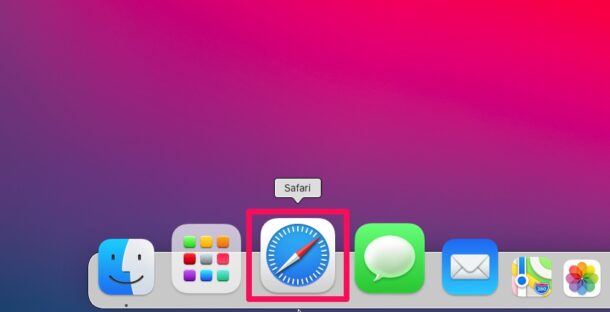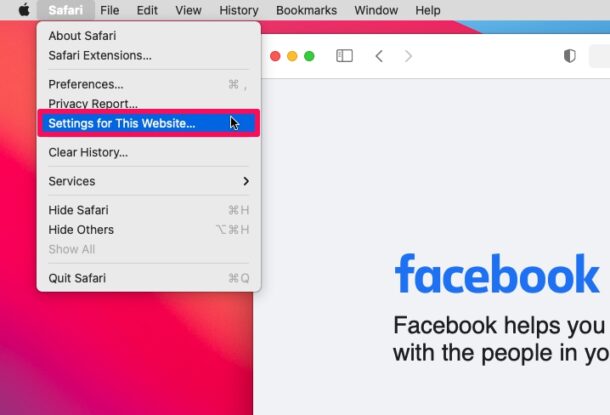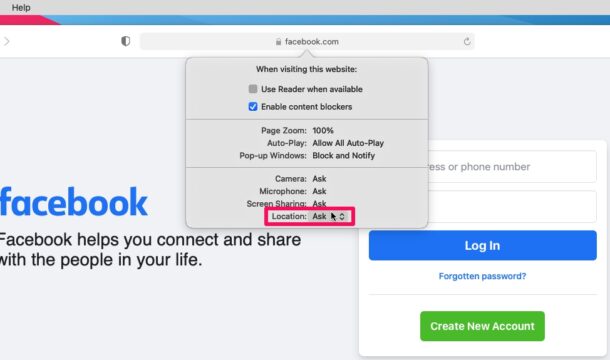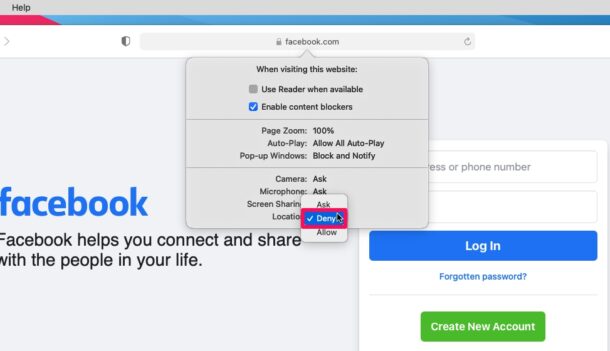How to Control Location Access for Websites on Mac with Safari
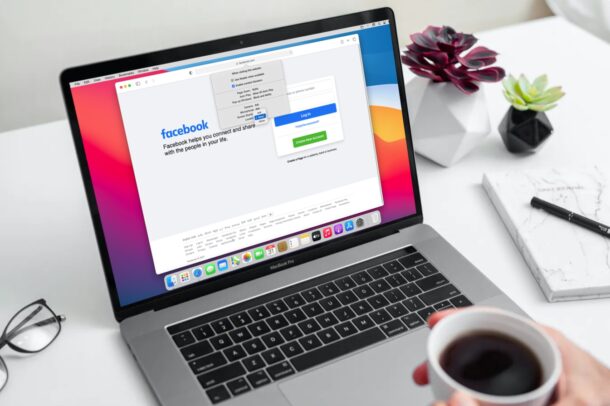
Don’t want a particular website to be able to access your location when using Safari on the Mac? Or maybe you’re tired of those location request pop-ups when visiting certain websites? Or maybe you’ve just decided you’d like to revoke a particular sites access to your location data? With Safari in macOS, this is all easy, as you have site-specific permissions for location access, similar to Safari on iPhone and iPad.
Giving the user control over their privacy and data is at the forefront of many Apple features lately, and location data accessed via the web is an example of this. While some sites need location data to function properly, like a maps or directions app, there are other sites that don’t, like most social networks and social media sites. If you want to control location usage of a website, or permanently block a sites access to your location data, you can do that. Read on to learn how you can control location usage, requests, and access for websites on Mac with the Safari browser.
How to Control Website Location Access in Safari on Mac
To make use of the website-specific settings that are mentioned below, make sure that your Mac is running macOS Mojave or later since they’re not available on older versions.
- Launch Safari on your Mac from the Dock, Spotlight, Applications folder, or Launchpad.

- Head over to the website that you want to limit or block camera and microphone access for. Now, click on “Safari” from the menu bar located next to the Apple logo.

- Next, choose “Settings for This Website” from the dropdown menu as shown in the screenshot below.

- This will bring up a pop-up menu below Safari’s address bar. Here, you’ll find all the website-specific settings such as camera, microphone, screen sharing, and location. Click on “Ask” next to Location at the very bottom.

- Now, select “Deny” if you want to block location access or “Allow” if you trust the website and only want to avoid pop-ups.

There you go, that’s how you control location access for the websites you visit using Safari in macOS.
For any site requesting this data, you can use either ‘ask’, ‘allow’, or ‘deny’, with ‘ask’ being the default choice and that’s what triggers the pop-up requesting location access on certain websites.
As long as you set either “Deny” or “Allow”, you will no longer get any location-related pop-ups from that particular website. Make sure to only share your location with reputed sites that you fully trust.
Similarly, you can make use of these settings to block camera and microphone access on a per-website basis using Safari too.
Not every Mac user relies on Safari to browse the web though, and browsers like Chrome, Firefox, etc also have features that allow website-specific settings in a fairly similar way too, but of course we’re focusing on Safari here.
Apart from these privacy features, Safari on macOS Big Sur introduced a new feature called Privacy Report which can be used to see how many trackers have been blocked by Safari while you’re browsing the web. If you’re interested, you can learn how to check Privacy Report for websites on your Mac, provided it’s running macOS Big Sur or later.
Do you use an iPhone or iPad as your primarily mobile computing device? In that case, you may also be interested in learning how you can restrict location access using Safari for iOS/iPadOS on a per-website basis. Also, if your device is running iOS 14/iPadOS 14 or later, you’ll also be able to view Privacy Report for websites.
Now you have learned to limit the number of websites that can access your location using these Safari website-specific settings on the Mac. Do you use this feature often? What do you think? Share with us your thoughts, comments, and experiences.

